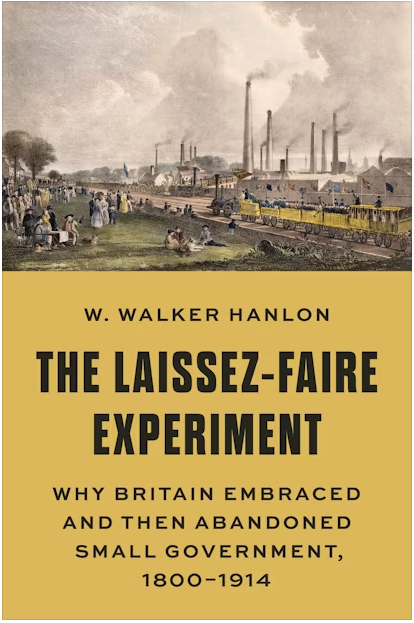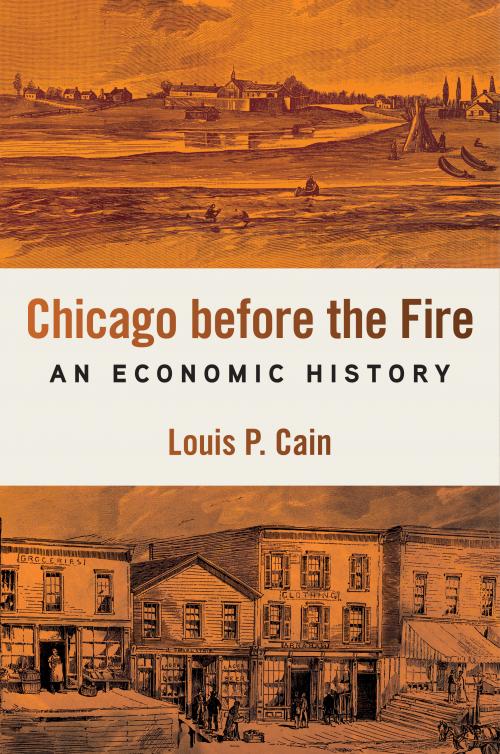Summer Reading Guide
As you work on your reading list this summer, be sure not to miss two new books about economic history written by Department of Economics faculty.
 Walker hanlon
Walker hanlon
The Laissez-Faire Experiment: Why Britain Embraced and Then Abandoned Small Government, 1800–1914
In the nineteenth century, as Britain attained a leading economic and political position in Europe, British policymakers embarked on a bold experiment with small and limited government. By the outbreak of the First World War, however, this laissez-faire philosophy of government had been abandoned and the country had taken its first steps toward becoming a modern welfare state. This book tells the story of Britain’s laissez-faire experiment, examining why it was done, how it functioned, and why it was ultimately rejected in favor of a more interventionist form of governance.
Blending insights from modern economic theory with a wealth of historical evidence, W. Walker Hanlon traces the slow expansion of government intervention across a broad spectrum of government functions in order to understand why and how Britain gave up on laissez-faire. It was not abandoned because Britain’s leaders lost faith in small government as some have suggested, nor did it collapse under the growing influence of working-class political power. Instead, Britain’s move away from small government was a pragmatic and piecemeal response—by policymakers who often deeply believed in laissez-faire—to the economic forces unleashed by the Industrial Revolution.
The Laissez-Faire Experiment is available from Princeton University Press.
Louis Cain
Chicago before the Fire
In earlier work, I addressed two questions: (a) Does the site of Chicago make economic sense? (b) What improvements were necessary to make the site viable for economic growth? When I retired, I began reading about Chicago’s first “industry,” the fur trade, about which I knew little. As I finished my reading, covid arrived. It became clear that combining some of my old research with the new, I could address the unasked question from that earlier work: What explains Chicago’s initial economic growth?
By 1830, at the end of the fur trade, no more than 100 folks lived in this unincorporated corner of Peoria County. In 1871, the year of the fire, the population was 325,000. The secret to this growth was that the lowest divide between the Great Lakes and Mississippi River watersheds, the Chicago Portage, was just upstream from the mouth of the Chicago River. A second ingredient was the area’s flatness attributable to its once being a glacial lakebed. The idea of building a canal across the portage was one of long standing. The area’s flatness facilitated constructing the Illinois and Michigan (I&M) Canal. When railroads were built, they had to compete with the canal to the west and the lake to the east, and that kept transport costs down.
Occasionally, there is an element of geographic determinism in discussions of Chicago’s growth – particularly that a large city was inevitable at a site adjacent to such a low divide. But that is neither necessary nor sufficient to explain Chicago’s growth as there were several other portages in the area. The site is one of four growth factors emphasized in the book.
A second is the timing. The promise of the I&M Canal was understood in the context of the success of the Erie Canal. That promise attracted people. And when railroads were added, they were built as spokes from a node. When those spokes were assembled into networks, Chicago found itself in a unique situation — it was the terminal point for the most important eastern and western railroad networks. Had the city begun a decade later, it is likely that the railroads would have located the city at the bottom of the lake (e.g., Gary), avoiding the trip north to the junction of river and lake. As it was, the railroads came to the site defined by the canal.
The third factor is the people. Many of those attracted to Chicago were far-seeing entrepreneurs who made the trek from the East to a place on what was the far western frontier in the 1830s. Typically, they were not the independently wealthy offspring of Eastern magnates, but the educated children of less-well-to-do families. Together with those who arrived to supply their labor, they built the infrastructure that made Chicago the logical marketplace for farmers in an ever-widening hinterland. The growing city not only required workers to build the canal and railroads, the docks and wharves, and the homes, it required people to do the often back-breaking work of moving cargo from one mode of transport to another. It required those who could see the advantage of producing in Chicago. It required those involved in financial services to provide the funds needed for all these activities. And it required those who addressed the other concomitants essential to urban life (e.g., newspapers, schools, and saloons).
The final factor, the key to making all this possible, was drainage. Given the area’s flatness, drainage was a major issue from the beginning; mud, a serious problem. An imaginative and expensive plan made Chicago the first U.S. city with a comprehensive sewer system. By recognizing the interdependency problem created by using Lake Michigan as both the water supply and the sewage discharge, and by ultimately reversing the Chicago River, the city adopted a sanitation strategy that conserved its water supply and significantly reduced the incidence of waterborne disease.
Additionally, a great deal of luck and serendipity were associated with Chicago’s growth. We may never know why the Americans chose to focus on the mouth of the Chicago River, but they did. They planned to construct a canal long before the means to do so materialized. They believed the Chicago Portage was the way west, that the commercial potential was enormous.
I hope it is evident from the above that this book has been written to be accessible to a general audience. The cast of characters is large. Some have names that will be familiar such as Jean Baptiste Point de Sable, Marshall Field, Cyrus McCormick, and George Pullman. Others who should be more familiar include Gurdon Hubbard, William Ogden, J. Young Scammon, and John Wright. Then those who have remained unknown, but deserve a better fate, such as William Burnett. Lastly, there’s John Evans, for whom Evanston is named and who, for a time, was a Professor at what became the Feinberg School of Medicine. All contributed to Chicago’s growth and to the Chicago we know today.
Chicago before the Fire is available from the University of Illinois Press.
